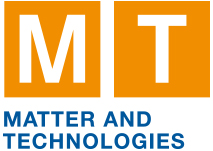Conveners
Stream 3: DTS Morning session
- There are no conveners in this block
Stream 3: DTS Late morning session
- Christian J. Schmidt (GSI Helmholtzzentrum fuer Schwerionenforschung GmbH)
Stream 3: DTS Wednesday morning
- Moritz Guthoff (DESY)
Originally developed for heavy-ion experiments such as STAR, CBM, and future Higgs factories, depleted CMOS Monolithic Active Pixel Sensors (DMAPS) have evolved into a competitive pixel detector technology. They combine an ultra-light material budget and exceptional spatial resolution with vastly improved radiation tolerance and rate capability. The technological advancements of the sensors...
The ALICE Collaboration is preparing for two major detector upgrades that will push the boundaries of silicon tracking. Following the LHC Long Shutdown 3 (2026-2030), the three innermost layers of the Inner Tracking System will be replaced with a novel, bent, ultra-light MAPS-based tracker: the ITS3. Six wafer-scale sensors, produced in a 65 nm CMOS process, will be thinned and bent into...
Many currently operating and future FELs can generate broadband radiation at MHz repetition rates, requiring a fast diagnostic tool (response time at least on a single-digit ns scale), ultra-broadband, & robustness. We develop ultrafast-operating THz detectors based on Schottky diodes and field-effect transistors (FET) operating at room temperature.
We present four critical features of our...
LGAD sensors are revolutionizing particle detection technology by enabling simultaneous, precise measurements of both position and time. These capabilities open the way to advanced 4D tracking systems designed for operation under high-intensity conditions. In this presentation, we will introduce a 4D system based on LGAD strip sensors coupled to dedicated amplifiers and read out using the...
Metallic magnetic calorimeters (MMC) for x-ray spectroscopy combine an excellent energy resolution comparable to crystal spectrometers with a broad bandwidth acceptance, thus providing new possibilities for precision measurement. At HI-Jena/GSI we have employed two MMCs each based on an 8x8 pixel array in a physics production run at the ion storage ring CRYRING@ESR. The digital readout of the...
For the upcoming high-luminosity LHC, the endcap calorimeters of the CMS experiment will be replaced by the high-granularity calorimeter (HGCAL). HGCAL is a sampling calorimeter using silicon sensors in the front and plastic scintillators read out by SiPMs in the rear. In this contribution we will present HGCAL's SiPM-on-Tile readout chain and discuss the steps that were neccessary to...
Ion computed tomography (iCT) is an imaging modality for the direct measurement of the relative stopping power (RSP) distribution inside the patient. While iCT could provide more accurate RSP maps compared to conventional x-ray CT, current systems still struggle to meet the clinical requirements, particularly keeping the image acquisition time under a few minutes. One solution is to build a...
The upcoming FAIR facility at GSI will host the Super-FRS, a high-resolution in-flight fragment separator designed to deliver radioactive ion beams for a wide range of experiments in nuclear physics and astrophysics. In this context, different Scintillating fiber-based trackers have been successfully developed. A production process for single layer fiber ribbons has been established....
Soft X-rays have a variety of applications at synchrotrons and FELs. In particular, the photon energy of these sources can be tuned to element-specific excitations, and in the soft X-ray range this allows (for example) high sensitivity to the carbon atoms that form the backbone of biological structures, or to excitations in transition metals that are crucial to magnetism. However, soft X-rays...
Radiation damage in diamond sensors is one of the main challenges in experiments performed at high intensities. This issue is particularly relevant for T0 detectors used in heavy-ion research. To significantly extend the lifetime of T0 detectors, we proposed a dedicated amplifier system that compensates for radiation-induced degradation. In this presentation, we will introduce a working system...

